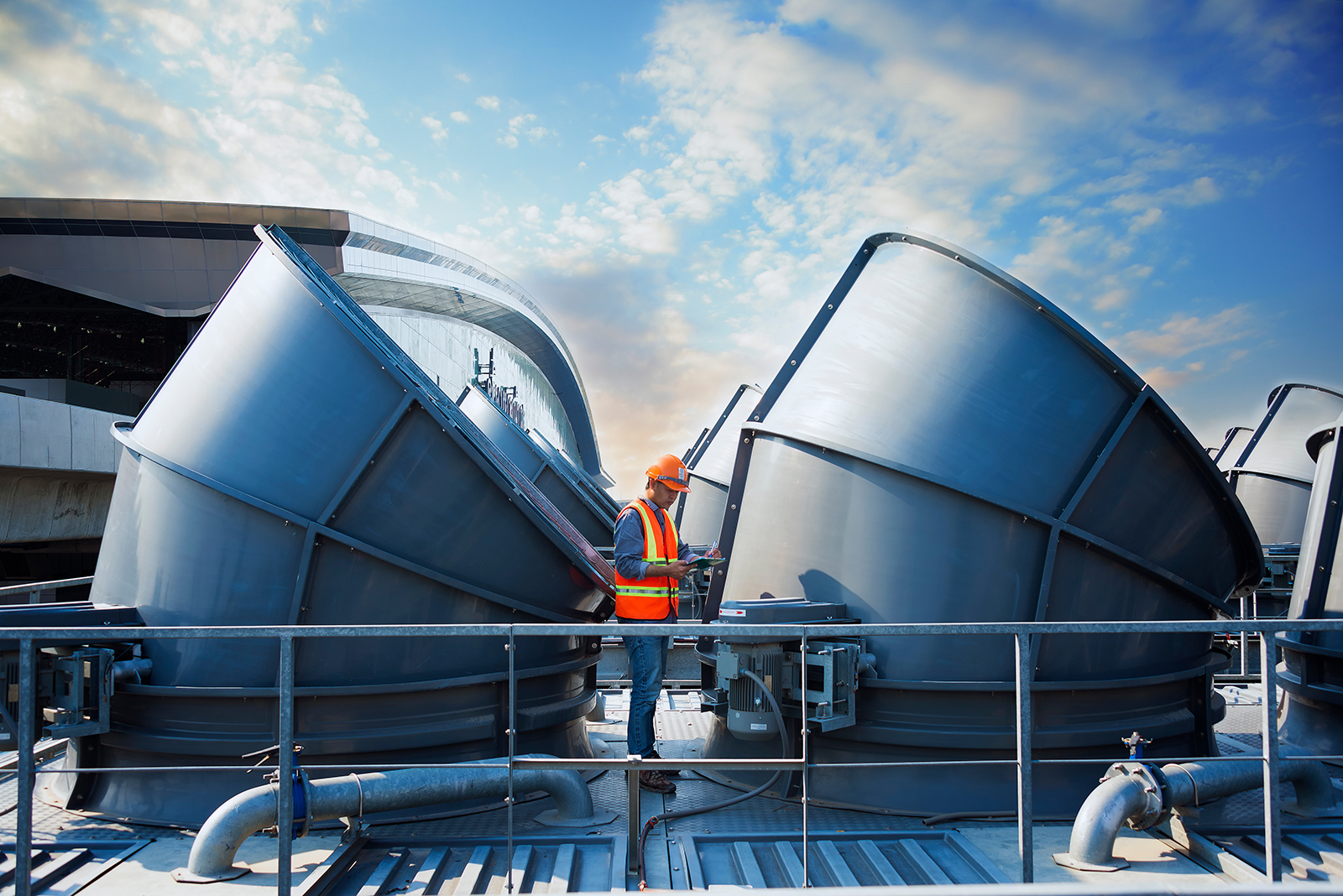John Ramirez, regional manager – engineering services – provides a breakdown of the essentials of what managers and board members should know about cooling towers.
Subscribe: Apple Podcasts | Spotify | RSS
Read Transcript
[00:00:25.710] – Matthew Holbrook
Welcome to The Uncommon area, where we apply an uncommon perspective to try to better understand what you need to know to be successful in an HOA. Today, our question is, what do we need to know about the maintenance of cooling towers? I’m joined by John Ramirez, our regional manager for engineering, and Matt Davidson, Action Property Management’s executive vice president. Thank you, guys. John, we start with you. Pretend that I know nothing on this. Why don’t we just start off with, what’s a cooling tower?
[00:01:01.530] – John Ramirez
Good question.
[00:01:03.030] – Matthew Holbrook
That was a dumb question. By the way, we should just note that we’re not even sure why Matt’s here on this episode. He doesn’t think he has much to add, but anyway, we let him tag along. What is a cooling tower?
[00:01:16.400] – John Ramirez
Cooling tower is basically, if you could picture your car, is a big radiator on top of a rooftop, and its main job is to basically cool down the water that goes to all the water source heat pumps within the building. This could be a high-rise building. Mid-rise buildings usually have a cooling tower.
[00:01:37.360] – Matthew Holbrook
Okay. Since this episode is all about how to maintain a cooling tower, I would expect that there are some things that we need to know about the maintenance of a cooling tower. Where would you start with that? What do a board member or a manager really need to understand first and foremost on this subject?
[00:01:56.000] – John Ramirez
Well, it’s two things. One is the preventative maintenance that goes to a cooling tower. A cooling tower is basically a big, square stainless steel box, basically looks like. It holds water. It has water in the water basin, which starts circulating through the cooling tower, which cools down the piping. This water requires to have water treatment. It requires water treatment to prevent any kind of algae or scale growth into the basin. What a board member needs to be aware of and a manager, is that, is it being given the proper chemical treatment? Do you have the right treatment vendor in place for the specific type of cooling tower you have at your building?
[00:02:39.510] – Matthew Holbrook
Talk to me just for a second. What does that actually look like, doing water treatment for a cooling tower? I’ve got this picture in my head, and I’m going to give myself away here. But some guy climbs up on a ladder, takes the lid off the top, and then just dumps in some chemicals like you would into a pool or something. How does this actually work?
[00:02:58.740] – John Ramirez
That’s how we did it in the old days, but I’m aging myself on that one. Nowadays, there’s actually drums. They’re about 10-gallon drums that they put on the rooftop that have different kind of chemicals. Either it’s a chlorine fed or a nitrate that they would put in the system. They connect pumps, little small pumps that they would put on these five-gallon drums, and then it gets injected. There’s a chemical controller that tells it every time it needs to be injected and how much it should be injected into the system.
[00:03:28.570] – Matthew Holbrook
Convince me why we even need to do this episode. Because it sounds to me like we’ve got these drums that are set with the chemicals. You have a maintenance vendor who comes out and makes sure that that is properly loaded with whatever it needs to have on a regular basis, and then it’s just automated, and just happens regularly. What does a board member or manager even have to do beyond that?
[00:03:50.680] – John Ramirez
Well, that’s an important question because everything is electronic nowadays, and as you know, electronic doesn’t last forever and it does fail. Someone has to actually go out there and actually make sure that the controller is calibrated and that the readings it’s showing on the screen is the accurate chemical treatment that it’s providing. Building engineers, maintenance techs, depending on who’s taking care of the property, are required to check on this chemical treatment on a daily basis. They actually do their own testing to make sure the readings are accurate.
[00:04:19.900] – Matthew Holbrook
That has to actually happen daily?
[00:04:21.410] – John Ramirez
That’s correct, yes.
[00:04:22.440] – Matthew Holbrook
That has to be logged and monitored?
[00:04:24.170] – John Ramirez
Yes. Maintenance techs or vendors have a log book that they would have to put by the controller. Usually, the health department likes to come and check on that to make sure it’s up-to-date.
[00:04:33.980] – Matthew Holbrook
Just to press on that. You’re saying daily as in seven days a week?
[00:04:37.460] – John Ramirez
Correct.
[00:04:38.700] – Matthew Holbrook
If there’s a building with a cooling tower and they don’t have onsite staff, then how does that happen every day?
[00:04:45.140] – John Ramirez
Basically, we can provide a five day coverage. A lot of these new controllers are automated that you can view them from your phone or a computer. They’ve updated the system a lot. A lot of the new controllers that I’ve seen at the different properties have been updated. An engineer can view it. The vendor can also view it to see if there’s any troubles or alarms, so they can correct it over their phone or a laptop.
[00:05:06.420] – Matthew Holbrook
Okay. Matt, you’re in a board meeting and a board member asks you about cooling towers. What would be the main thing that you would be thinking that you would want to communicate to board members they need to have in mind on the subject?
[00:05:20.550] – Matt Davidson
It’s important to keep up with the treatment because if you like being cool in the summer, you want to keep your cooling tower running efficiently or you won’t have any air conditioning in your unit.
[00:05:32.430] – Matthew Holbrook
Ultimately, from a board perspective, it’s coming back to a budgetary question. Make sure that you’ve got this budgeted for. This is not something you want to skimp on in your budget.
[00:05:42.880] – Matt Davidson
Yeah, exactly. It’s an unavoidable cost in terms of the treatment itself and the equipment is really expensive. It’s better to pay for the preventative maintenance and prolong the life than try to save a little money each month getting subpar treatment and then wind up having to make expensive repairs when the metal starts to rust out because it hasn’t been properly treated or the water hasn’t had the right chemistry and so you’ve got to replace parts in the tower itself.
[00:06:17.790] – John Ramirez
Or even worse, lack of chemical can also cause legionella. That was a big thing back in Disneyland about eight years ago when it got a lot of people sick. That’s something we really want to watch out for, especially, in the residential high-rise that we want to make sure that we’re putting the proper chemicals in there.
[00:06:35.560] – Matt Davidson
The right vendors should be testing at least monthly and reporting that to the association on the reports that they submit.
[00:06:46.930] – Matthew Holbrook
John, you were saying earlier, before we even started recording, that you’ve been getting a lot of calls and a lot of issues that are being raised with regard to cooling towers. What are the kinds of things that you’re hearing about right now? How and why are you getting involved?
[00:07:00.590] – John Ramirez
Well, this is my annual inspection year. I usually do it at the beginning of the year, so I get a chance to look at everyone’s equipment up close and impersonal. As I’m walking these high-rises and mid-rises, I’ve been noticing a lot of cooling towers are showing signs of algae growing on some of the towers, scaling growing on some of the eliminators on the walls of the towers. That’s a huge concern. It’s a health concern for one, and it’s an equipment concern. I know the maintenance techs that are on site, they’re doing as much as they can, but they don’t control the chemicals. They have to get with their vendors and figure out what the proper mixture is for each tower. Each tower has its own mixture, it has its own way of controlling what grows and what doesn’t grow. That’s something that the maintenance techs or community managers have to work with the vendor to figure out what’s the best fit for that.
[00:07:48.080] – Matthew Holbrook
What I’m hearing out of all of this, again, from a manager/board member perspective, having some third party who’s not directly involved in the maintenance at all, doing some type of regular inspection just to make sure that nothing is getting missed, seems to be really important. That’s the function, it seems that you’re serving on a lot of these buildings. But having that third-party inspection by somebody who’s not vested in the maintenance seems to be pretty important.
[00:08:14.100] – John Ramirez
It is. Always getting a second opinion is great. Some of these vendors have been at these properties for a lot of years. They get comfortable and then they feel like no one’s watching them, no one is checking on them. For them, it’s just a monthly service that they come, check, open up a drum, is there chemical? Okay, great, I’m going home. It’s good to have someone looking over these guys.
[00:08:31.600] – Matt Davidson
Or maybe the technician changed. You could have a great technician for seven years, and then that technician moves to another company, and the person who’s picking up the route is not quite as conscientious as the last one.
[00:08:44.380] – Matthew Holbrook
Well, anything else, John, that we need to know about maintaining cooling towers?
[00:08:48.610] – John Ramirez
That’s just the first part, so the chemical. Now it comes to the maintenance part of it. Cooling towers require cleaning. Every two years, it’s required to drain down the basin of the cooling tower of all its water, old chemicals, and then pressure washing the basins, getting all the debris and gunk out of it. That’s really important to be done. A lot of these buildings think once a year is enough. Really, it’s not. With all the construction going around in all these different buildings, new high-rises going up, it’s crazy. A lot of that dust falls into the towers and basically starts to clog up pores, clogs up pipes, goes into the water supply, which then starts to clog up the heat pumps in the building. It’s very important to clean the towers every six months. Again, this is due for the cleaning. This is also the manufacturer’s recommendation as well, to make sure that there is no debris in these towers, that all algae and scales are removed. It’s also important to sanitize the cooling tower once you’re done. Make sure that any chemicals, any kind of diseases is killed in the tower before you fill it back up with the water.
[00:09:52.530] – Matthew Holbrook
Every six months doing that sanitation as well.
[00:09:55.660] – John Ramirez
Yeah. That’s one of the biggest keys to cleaning the cooling towers, making sure it’s done properly every six months, checking out the fans, checking out the fan motors, greasing bearings, and changing belts. This is also required to be done on a quarterly basis. You got to remember, it’s just like a car radiator. If the fan goes out on your car, it overheats and it stops. Same thing with the cooling tower. If the fan happens to give up because the fan broke or the motor went out, all heat pumps overheat and then they turned off. Fortunately, of course, it doesn’t happen in the wintertime. It happens in the summertime. Then we’re getting calls like crazy. Then trying to find parts in the summertime is hard because everybody’s equipment is falling out. Staying on top of your maintenance is a huge important thing to do.
[00:10:43.110] – Matthew Holbrook
Anything else that we should be talking about on this subject?
[00:10:46.680] – John Ramirez
Yeah. Doing visual inspections. The maintenance techs do as much as they can. They’re supposed to check this every time they’re on site, making sure that it’s not leaking, that the condition of the tower is going good. But it’s good for the managers to go up there and take a look at their cooling towers and make sure they’re in good shape. It’s another set of eyes to go check the stuff out. I know in the past, the cooling towers is one of the most expensive thing to fix. The last board meetings I attend, it’s like, why is it so expensive to do the motor? Why is it so expensive to do the maintenance? Sometimes it’s good to take the board members out there and let them have a visual look at it. Once they get a look at how big this cooling tower is, then they’ll understand why it’s so expensive to maintain.
[00:11:30.600] – Matthew Holbrook
Well, good. Anything else that either of you would have to add that managers and board members need to keep in mind?
[00:11:37.230] – John Ramirez
No.
[00:11:38.160] – Matt Davidson
I don’t think so.
[00:11:38.900] – Matthew Holbrook
All right. Well, good. Well, thank you both very much. That concludes this episode of The Uncommon Area. We just encourage you to check out other episodes where we address others questions that are helpful and important to understand for operating an HOA.





